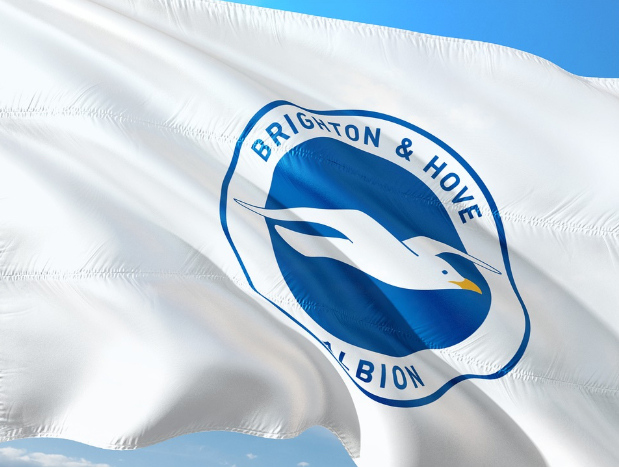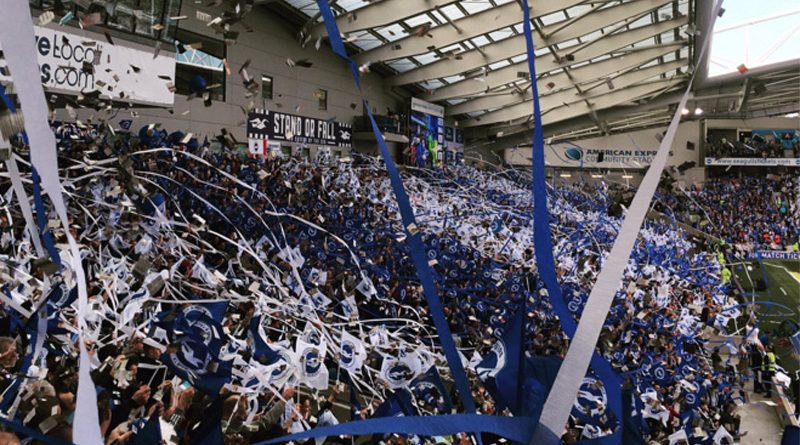Remembering the Goldstone: A Brief History of the Albion’s First Stadium
Young Seagulls fans may not remember the agony of going without a permanent stadium from 1997 to 2011. And others may now have little knowledge of Brighton and Hove Albion’s first stadium. Way before the Amex Stadium opened at the start of the 2010s, the Albion’s Goldstone Ground was the heart and soul of the club.

Image source: https://pixabay.com/photos/football-international-england-3568898/
Today, the Goldstone Ground has sadly been turned into a retail park. But for nearly a century, it proudly stood on the Old Shoreham Road, near Hove Park.
It all began in 1901. The site was cattle-grazing land owned by Goldstone Farm. John Clark asked if he could lease the site for the amateur Hove Football Club to play their 1901-02 season.
Clark built an eight-foot fence around the perimeter, complete with turnstiles, as well as changing rooms and a 400-person-capacity stand.
On 7 November 1901, the very first football match at the ground took place between Hove FC and Clapton. Not long after, Brighton and Hove Albion approached Hove FC to ask if they could use the new pitch.
Hove FC offered to share the ground with the Albion, as it made financial sense. Brighton and Hove Albion accepted in time for the 1902-03 season.
If you are currently missing attending games due to the postponement of all matches, why not fill the void by playing exciting footie video games?
There are many excellent games you can play online. One of them is Football Champions Cup slot game, in which you can try out your skills in the penalty shoot-out of the bonus game.
You can enjoy playing Football Champions Cup and loads of other slot games and table games at Casumo casino.
By 1904, Hove FC decided to play at Hove Rec. The Albion took the opportunity to sign a seven-year lease of the Goldstone site as sole tenants.
The Albion’s board of directors soon began making improvements to the ground. A new stand was erected to accommodate 1,800 spectators, and new turnstiles and entrances were constructed.
During the First World War, the Goldstone site was used as a rifle range. By the time the war was over, the ground had become devastated.
After raising funds, the South Stand was almost entirely rebuilt, the West Stand was partially re-seated, and the small terraces were remodelled.
In 1920, the West Stand was expanded to include an additional 300 seats, and new changing rooms and offices were installed.
In 1926, the Albion’s chairman Charles Brown signed a 99-year lease with the ground’s owner. More terraces were added, and other improvements were made over the next few years.
But not long after, war once again caused much damage. In the summer of 1942, Goldstone suffered significant damage after a German bomb exploded on the North Stand.
Following World War II, the Albion’s board decided to invest £100,000 to reconstruct the whole ground. By 1958, the stadium had gone through some major transformations. Most notably:
· Part of the East Terrace was reconstructed and combined with the Chicken Run to make a new east enclosure.
· New turnstiles and toilets were installed.
· The north-west corner was raised to accommodate an additional 2,000 spectators.
· All standing areas were terraced.
· The South Stand was completely rebuilt using new foundations.
· The North Stand was extended to the full width of the pitch.
· Part of the West Stand was replaced.
As the Albion increased their performance over the next couple of decades, more seating was required to accommodate fans. So, in 1978, the West Stand was erected to provide an additional 980 seats.
In 1995, it was revealed that the Goldstone ground was to be sold. The Albion had mounting debts, so the sale was an attempt to avoid bankruptcy.
Fans had not been consulted, and no other ground had been lined up for the Seagulls, so Albion fans were naturally angry at the decision.
Indeed, the news prompted a couple of pitch invasions in 1996. After a proposed ground-share with Portsmouth fell through, the Albion eventually began a ground-share with Gillingham at Priestfield Stadium, even though the ground is more than 70 miles away from Brighton.
The agonising years then began, as the Albion team tried to find a new ground to call their home.




